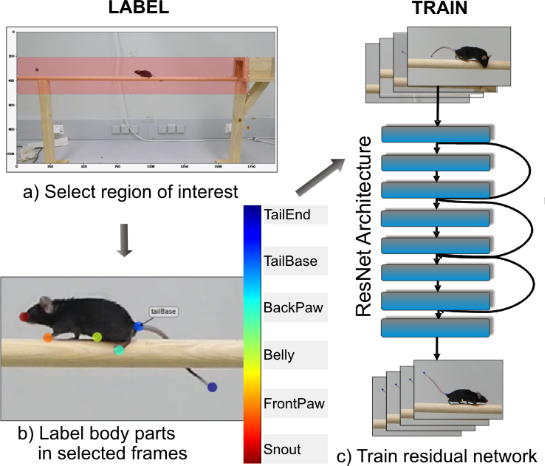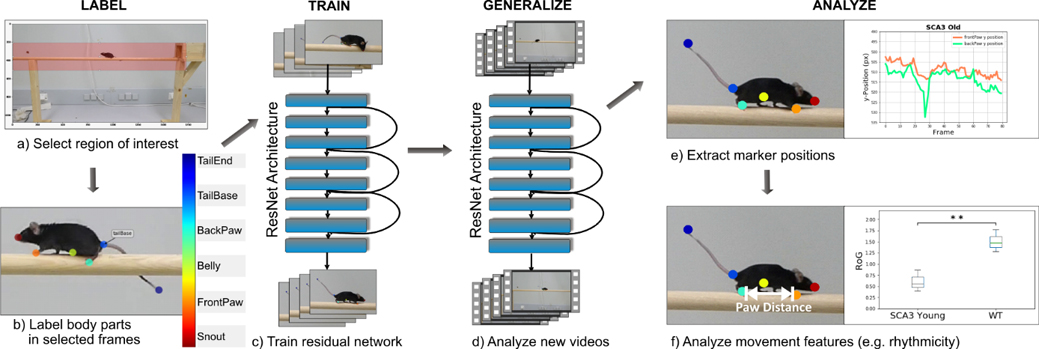Detecting and Quantifying Ataxia-Related Motor Impairments in Rodents Using Markerless Motion Tracking With Deep Neural Networks

Research Area:
Clinical Movement Control and real-life Behavior Analysis for Assistive SystemsResearchers:
Jana Lang; Winfried Ilg;Collaborators:
Eva Haas (University Tübingen); Jeannette Hübener-Schmid (University Tübingen); Collin J. Anderson (University of Utah); Stefan M. Pulst (University of Utah)Description:
Animal models of adult-onset neurodegenerative diseases have significantly enhanced the understanding of the molecular (patho-)mechanisms and have offered enormous potential for therapeutic target evaluation in many neurodegenerative diseases including Alzheimer’s disease, Parkinson’s disease or spinocerebellar ataxias. In the last decades, rodent models were used to specifically investigate the (i) underlying disease mechanisms by molecular and neuropathological analyses, (ii) natural history and (iii) potential therapeutic interventions. In order to evaluate such therapeutic interventions, objectively measurable biomarkers are needed to quantify disease progression and therapeutic response. Especially the identification of early markers, which represent the presymptomatic phase of the disease, are urgently needed.
In this study, a video-based behavioral tracking method based on deep neural networks was employed to capture the movement behavior of two different rodent models for cerebellar ataxia, a degenerative neurological disorder which mainly affects the cerebellum and manifests with symptoms like gait abnormalities, limb coordination deficits and instability. Based on the recorded movement videos and the traced marker trajectories, we investigate the capability to extract features for the quantitative description of ataxia-specific characteristics in different movement tasks. In particular, we are seeking for movement tasks and features which enable the identification of subtle movement changes in very early stages of the progressively degenerating disease.

